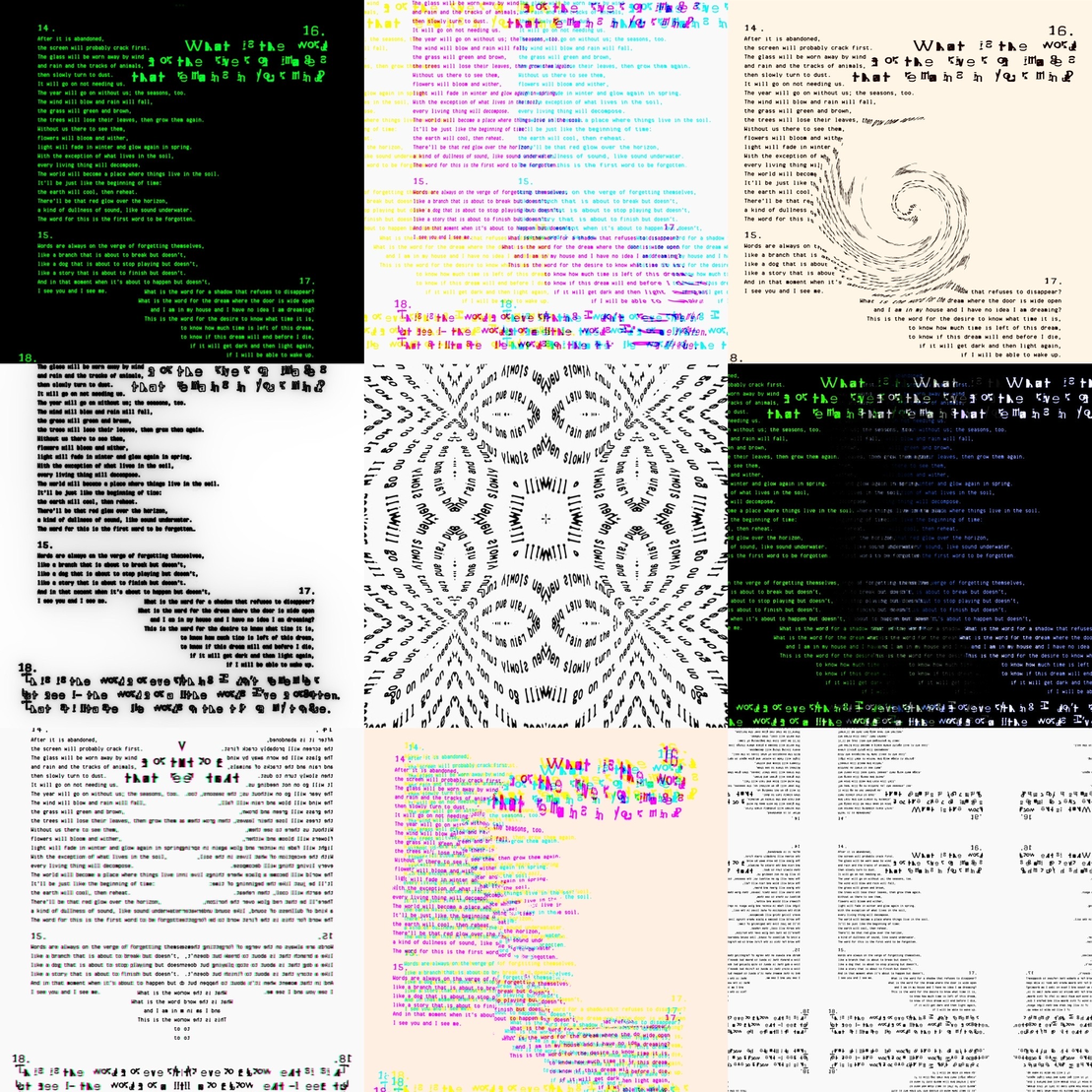
BLOCKCHAIN AS BESPOKE PRINTING PRESS
written by Sasha Stiles
As a writer with frustrated graphic design ambitions, I often work in broadsides – a visual format for poetry generally associated with hand-set type, fine paper and decorative illustration. Though niche, this historical genre seems surprisingly resonant with the creative practices of many authors seeking to translate their texts into eye-candy NFTs, yet I rarely hear it referenced.
The broadside as a vessel for information dates back to the popularization of moveable metal type in the 15th century, when public announcements, aka broadcasts, were cheaply printed on sheets of cloth or pulp paper, posted or handed out, read quickly, then discarded – fungible by design. (Of course, moveable type goes back much further, to ancient cylinder seals and punch types, and pre-Gutenberg innovations in East Asia.) While such “street literature” – official proclamations, advertisements, political or religious manifestos, ballads – gave way over time to technologies like newspapers, radio, TV and social media, broadsides have endured as a vehicle for poetry, enabling verse to exist in common spaces and stand on its own as an art object, beyond the bounds of a magazine or book.
In my work as a poet, I’ve created traditional printed broadsides as well as digital broadsides that come to life as next-gen movable type, where words move, shimmer, glitch, change color, write themselves across the screen and disappear with cinematic flourish; and I’ve collaborated with large language models like GPT-3, as well as artists like Nathaniel Stern, to see what happens when machines “perform” poems.
In forthcoming projects, including a project with code poet Sarah Ridgley, I invoke a new format, the “generative broadside,” as a literary corollary to gen art – deploying text-as-code to publish 1/1 editions of a single text. By enabling widespread distribution and access, the original broadsides, powered by moveable type, imbued paper and words with cultural currency. Now, NFTs powered by generative algorithms have the potential to kickstart a new renaissance, in which blockchain is leveraged as a bespoke multimedia printing press, enabling writers and publishers and other industries and makers of consumer goods, too, to mass-produce and distribute one-of-a-kind tokens that are far less fungible than their precursors.
With a generative broadside, every transaction, every interaction with a given algorithm is unique; therefore each poetic output has its own attributes, iterations and customizations – its own personalized reading. Yet there’s still a shared experience, a common core and code.
In a way, this has always been the case with language and with literature. We use standardized alphabets, grammars, syntaxes, colloquialisms, vernacular and metaphor, yet the same stanza can and will be read a hundred different ways by a hundred different people with their individual backgrounds and interests. (Ditto art, fashion, music…) A well-known love poem read at a thousand weddings cues something universal, but lands differently with each and every listener. In other words, poetry has always been generative. Language has always been a generative art.
So what happens when the tools of literature become, well, literal? When the metaphor of generativity manifests as multiple editions to be sold, read and traded?
Publishing innovations have always impacted not just the mechanics of printing but also the writerly and readerly imagination, changing the stories we tell ourselves and others, as well as how we share them. Having shifted from inscriptions in clay to laboriously hand-copied manuscripts to the Gutenberg Bible, penny dreadfuls and serialized literature, it’s inevitable that the written word will continue to evolve – that the software that is language, and its hardware (stone, wax tablets, papyrus, typewriters, word processing devices, voice memos, AI-powered language models, platforms like fxtext) will keep upgrading and updating, suggesting new modes for creating and engaging with literature. That in turn will take us to new places inside ourselves, as we try to make sense of the world now and as it will be, as we learn to feel the feelings and name the nameless emotions we’ve only just begun to acknowledge.
I don’t see the point of resisting, though I know many do. Bare words, physical books, pure poetry will always be with us, whether or not we have the internet or even electricity; and I will always use and revere these technological touchstones. But I can’t help wanting to dive in to experiment with cutting-edge tools and techniques, as writers and readers have always done. After all, it’s precisely these advances over time that have shaped what we now think of as “human.”
***Stay tuned for the release of several new poems as generative broadsides… ***